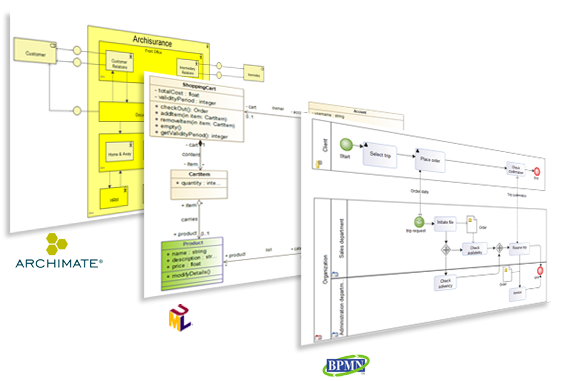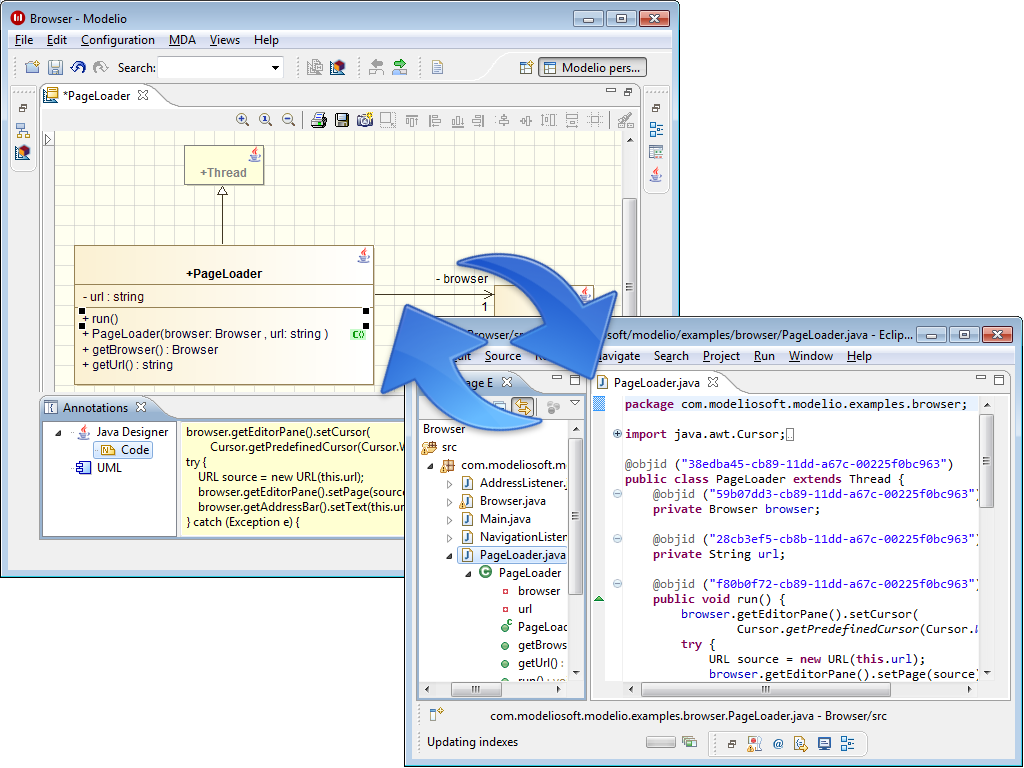

We will conclude by looking at our theory of hybrid relations, which is being used to give a semantics to Modelica, and demonstrate some examples of hybrid programs. We will also give an overview here of how differential equations can be encoded in the Isabelle tool. In the second session, we will go into more detail about the foundations of Isabelle/UTP, including its lens-based state-space model and our theory of generalised reactive processes. We will also demonstrate the use of CSP & Circus, and exemplify this with an encoding of an FMI system and model.
#Modelio eclipse integration how to
In the first session, we begin with a hands-on introduction of our mechanised framework and proof tool Isabelle/UTP, showing how to prove simple logical properties about programs using algebraic laws, Hoare logic, and the weakest-precondition calculus. ℹ️About GitHub Wiki SEE, a search engine enabler for GitHub WikisĪs GitHub blocks most GitHub Wikis from search engines.In this tutorial, we will explore our mechanisation of the UTP semantic framework in Isabelle/HOL, which provides the theoretical foundations of the INTO-CPS tool chain. This query produces a sequence of >x, y pairs which indicate that y classes have more than x operations of their own. Return (c|c.ownedOperationCount > n).size Range queries with indexed or derived integer attributes return (c|c.ownedOperationCount > 0).name įinds the names of the classes with at least one operation of their own.Īdvanced example: loops, variables and custom operations var counts = Sequence We can also access containers using x.eContainer. An interest rate swap is a financial contract in which two parties agree to exchange distinct cashflows for a given period of time. In general, if x.e is a reference, we can follow it in reverse with x.revRefNav_e. The UML metamodel doesn't have "subclass" links, but we can use Hawk's automatic support for reverse traversal of references. Our team of experts are here to assist you will all your needs and willing to do what it takes to make your next project as seamless as possible. Gives the names of all the subclasses of Animal (follows "superClass" in reverse). Specialists in low voltage services and solutions, dedicated to quality of service and performance. Reverse reference traversal return Class.all Gives you the names of all the superclasses of class Zebra within model zoo. The query dialog with the result would look like this: This is an example of the queries that can be performed at the "meta" level: more details are available in Meta level queries in Hawk. Gives you all the reference slots in the UML "Class" type. Javadoc comments can be accessed while browsing the model, and are kept permanently in sync with the model and the Java code.

Reference slots in a type return (t|t.name='Class').references With Modelio, you can automatically improve all the Javadocs belonging to your existing applications, by automatically inserting UML diagrams, with an HTML inter-diagram browsing feature. This is faster than going through the model because we can go to the Class node and then simply count all the incoming edges with label "ofType". If you put "*" in "Context Files", it'll count only the classes within the OSS project. If you leave "Context Files" empty, it'll count all the classes in all the projects. Returns the total number of classes within the specified scope. To avoid ambiguity in type names, the default namespaces list in the query dialog should include the UML metamodel URI ( for the above UML.ecore file). In either development environment, automatic, real-time synchronization between the UModel.
#Modelio eclipse integration software
The rest of this article will run on this toy XMI-based UML file, which was exported from this Modelio 3.2.1 project: UModel support for integration with the Eclipse and Visual Studio allows you to view and seamlessly switch between your UML software model and source-code editing windows in the same application development environment where you develop software projects. If you are using any predefined UML data types, you may also want to add a PredefinedUMLLibraries location inside "Indexed Locations": that will integrate those predefined objects into the Hawk graph, allowing you to reference them on queries. In order to index XMI-based UML models, you only need to enable the UMLMetaModelResourceFactory and UMLModelResourceFactory plugins when you create a new Hawk instance, and ensure your files have the. All the queries are written in the Epsilon Object Language. These are some sample queries that can be done on any set of indexed XMI-based UML models, assuming that Class::name has been added as an indexed attribute and Class::ownedOperationCount has been defined as a derived attribute (as showed in Basic concepts and usage).


 0 kommentar(er)
0 kommentar(er)
